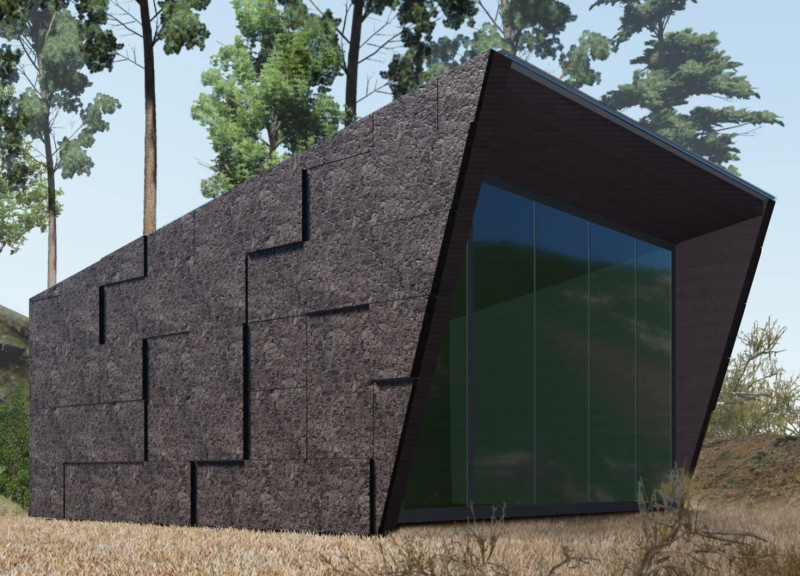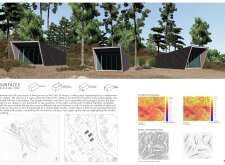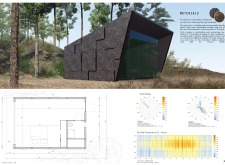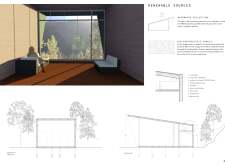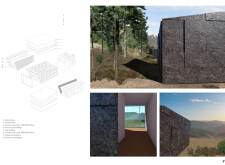5 key facts about this project
Set in Vale de Moses, Portugal, the project is designed with comfort and sustainability in mind. The natural surroundings and Mediterranean climate shape the approach to create a series of sleeping pods that serve as retreats for individuals seeking tranquility. The overall concept focuses on fostering a strong connection between the interior spaces and the landscape, blending functionality with a harmonious aesthetic.
Design Features
The sleeping pods feature sloped roofs, which help manage rainwater effectively. This design choice is practical, addressing the region's moisture while contributing to a clean and simple outline that fits the rolling hills. Inside, panels of varying sizes and thicknesses create interesting patterns of light and shadow, which adds depth to the interior spaces and enhances the overall atmosphere.
Material Utilization
Materials used in the construction are carefully selected to support sustainability. Cork is employed for both insulation and external cladding, helping regulate interior temperatures while also providing sound insulation. Inside, wooden cladding brings warmth to the living spaces. A waterproofing membrane is used to protect against dampness, ensuring the longevity of the structures.
Sustainability Strategies
Rainwater harvesting is an essential feature, collecting and filtering rainwater for drinking. Greywater is then reused for watering gardens, showing a commitment to efficient use of resources. This approach supports a lifestyle that minimizes environmental impact, making the most of the natural water cycle to sustain the landscape around the pods.
Innovative Energy Solutions
The design also includes bio-photovoltaic panels, which generate energy from natural processes in the soil. These panels collect energy from bacteria and connect the architecture to its ecological context. This method of energy generation demonstrates a thoughtful integration of technology and nature, allowing the pods to be more self-sufficient.
Stained glass windows frame views of the surrounding hills, filling the interiors with natural light while also creating a visual link to the landscape outside. This detail not only enhances the beauty of the spaces but also invites the natural world inside, enriching the experience of those who dwell within.


